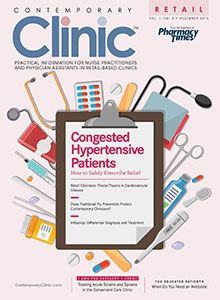The Impact of Loud Noise Exposure on Cardiovascular Health
In a recent study, a correlation was found between bilateral high-frequency hearing loss and coronary heart disease.
In a recent study published inOccupational and Environmental Medicine, a correlation was found between bilateral high-frequency hearing loss and coronary heart disease (CHD). Participants in the study who had been exposed to loud noise, due to their occupation, were most strongly linked with bilateral high-frequency hearing loss, compared with patients with normal high-frequency hearing or unilateral high-frequency hearing loss.
Participants were pooled from the US National Health and Nutrition Examination Survey 1999—2004, which includes a series of surveys that employ a strategic sampling formula. For the purpose of this study, loud noise at the workplace was defined as at least 3 months of noise loud enough for the need to speak in a raised voice. Leisure time loud noise included exposure to firearms, loud music, or power tools an average of at least once a month for a year.
A total of 12% of participants with bilateral high-frequency hearing loss had CHD, versus 2% and 5%, respectively, for those with normal high-frequency hearing and unilateral high-frequency hearing loss. Compared with those with normal high-frequency hearing, those with bilateral high-frequency hearing loss were 1.91 times more likely to have CHD.
This finding was present in those who experienced loud noise in either the workplace or during leisure time, but was strongest with those who were exposed in the workplace. Of note, loud noise exposure in the workplace had no significant correlation with unilateral high-frequency hearing loss or unilateral/ bilateral low-frequency hearing loss and CHD.

Knock Out Aches and Pains From Cold
October 30th 2019The symptoms associated with colds, most commonly congestion, coughing, sneezing, and sore throats, are the body's response when a virus exerts its effects on the immune system. Cold symptoms peak at about 1 to 2 days and last 7 to 10 days but can last up to 3 weeks.
COPD: Should a Clinician Treat or Refer?
October 27th 2019The Global Initiative for Chronic Obstructive Lung Disease (GOLD) defines the condition as follows: “COPD is a common, preventable, and treatable disease that is characterized by persistent respiratory symptoms and airflow limitation that is due to airway and/or alveolar abnormalities usually caused by significant exposure to noxious particles or gases.â€
Diabetic Ketoacidosis Is Preventable With Proper Treatment
October 24th 2019Cancer, diabetes, and heart disease account for a large portion of the $3.3 trillion annual US health care expenditures. In fact, 90% of these expenditures are due to chronic conditions. About 23 million people in the United States have diabetes, 7 million have undiagnosed diabetes, and 83 million have prediabetes.
What Are the Latest Influenza Vaccine Recommendations?
October 21st 2019Clinicians should recommend routine yearly influenza vaccinations for everyone 6 months or older who has no contraindications for the 2019-2020 influenza season starting at the end of October, according to the Advisory Committee on Immunization Practices.
What Is the Best Way to Treat Pharyngitis?
October 18th 2019There are many different causes of throat discomfort, but patients commonly associate a sore throat with an infection and may think that they need antibiotics. This unfortunately leads to unnecessary antibiotic prescribing when clinicians do not apply evidence-based practice.
